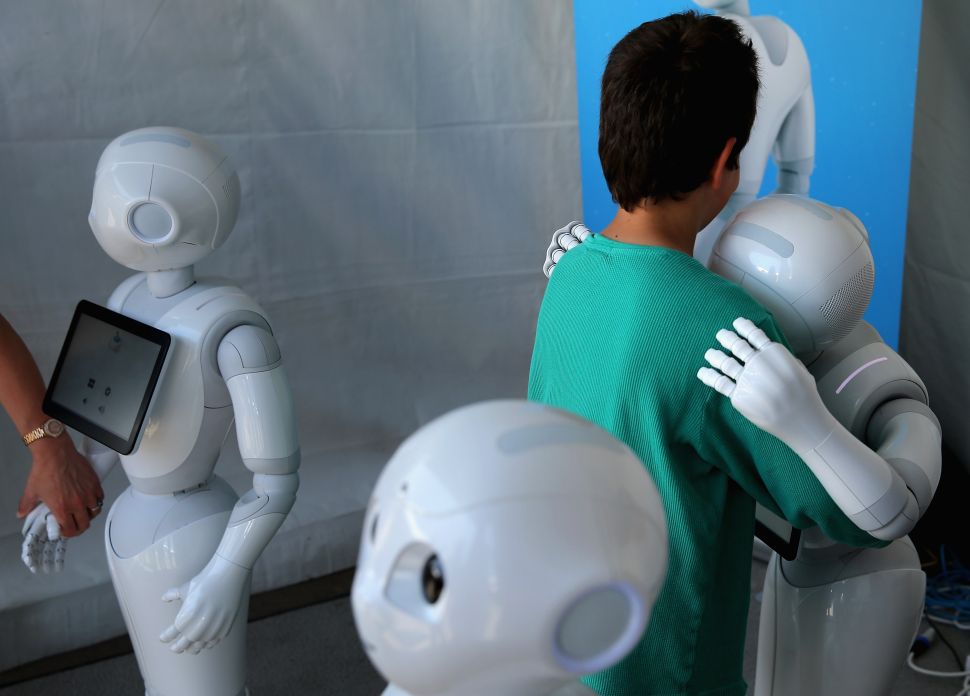
As A.I.-driven changes in the workplace increase in number and scope, there is growing concern over the technology’s impact on employment. However, these concerns can be addressed if we prepare for future changes. While A.I. is eliminating many jobs traditionally filled by humans, history shows that, in the long term, it will create countless new employment opportunities. Moreover, although algorithms outperform people in many areas, human capabilities will remain irreplaceable in the workplace for the foreseeable future.
Waves of innovation that bring extreme changes to the workplace are by no means new. Consider, for example, the introduction of containerization in the 1950s. Transporting goods in standardized steel boxes revolutionized international trade. It also eliminated many jobs associated with the manual loading and unloading of cargo. However, containerization also spawned new industries, such as the construction, maintenance, and handling of freight containers, and the development of technology that optimizes how each unit is loaded and tracks the global movement of containers.
Similarly, A.I. will create new types of enterprises and job opportunities that we can only imagine today.
Also, humans will be an integral part of these future workplaces. Although algorithms are far superior when it comes to performing repetitive tasks, processing vast amounts of data, and identifying key trends and patterns, people will continue to excel in a number of areas. Here are some examples:
1) Real-world experience
A lifetime of experience in the physical world allows people to detect changes or discrepancies between normal and abnormal situations. For example, during the financial crisis of 2008, companies worried about the financial health of their suppliers. Many companies asked for economic data from suppliers, but these numbers could be manipulated and only provided a lagging, infrequently updated view of conditions at the supplier. To augment the data, companies sent people to spot-check critical suppliers’ production of parts or materials on behalf of the company.
2) A moral perspective
Many work tasks involve value judgments and subjective elements based on the system designer’s or manager’s preferences. However, objectives, moral understandings, and preferences change over time. While machines may be able, if appropriately trained, to sift through large amounts of data and present options for actions, people must make the ultimate decisions in cases where the implications matter. This is especially true when the context changes and decisions must be made in a different environment. For example, when prioritizing the response to a disaster, should preference be given to customers, employees, suppliers, shareholders, or the community? The honest answer is “it depends” on the nature of the event and the context, which makes it difficult to program or train a model.
3) Adaptability and coordination
People are more adaptable than robots when faced with unstructured conditions and environments. Robotic software systems are built and optimized for specific tasks or domains. However, change (disruptions, new knowledge, new products, competitors’ actions, economic cycles, etc.) can render the machine’s appropriateness moot, requiring a person to take over the task. Also, social networks are adept at creating new corporate organizational structures to manage change. This has happened in response to numerous disruptions over recent years, such as the 2011 earthquake in Japan and the Covid-19 pandemic.
4) An in-built creative drive
Change that requires adaptation is built into many consumer and technology supply chains, such as fast fashion. These fast-moving supply chains search ceaselessly for differentiation that can spur demand for any new product or service. People, not machines, are part of a cultural milieu that stimulates creativity. Also, humans understand the vagaries of everyday life, and this hands-on experience creates possibilities for new products and services.
5) Empathy and communication
While a growing number of A.I. applications are used in health care, computers cannot show the empathy required of a nurse while treating a patient. Likewise, a machine cannot replace the smile of a service worker, such as a cashier in a local supermarket. Similarly, procurement contract negotiations cannot occur without both sides understanding each other, developing rapport, and appreciating each other’s points of view.
Even though algorithms that mimic these qualities are becoming increasingly sophisticated, it isn’t easy to imagine absolute acceptance of machine-generated, simulated emotions and empathy.
6) Nuanced risk management
While rules can be programmed based on different contexts, the most appropriate choice in a situation that requires a company to select a way forward may differ from the one suggested by the rules. For example, if the company suspects a recession is on the horizon, it may prefer the safer course of action rather than the high-risk/high-reward path. Humans are used to taking such nuances into account when making decisions.
Balancing human and machine intelligence
The vital challenge for societies as A.I. advances is how to create workplaces that enable humans and machines to work alongside each other—not in competition.
This can be achieved in various ways. For example, data analyzed by A.I.-based models can be sent to human decision-makers for action. Chipmaker Intel uses this approach in its procurement operations. Its A.I. system provides a mass of data, such as supplier performance reports, that help procurement managers make sourcing decisions.
Another method is to deploy A.I.-infused automation technology to carry out most of the work. Humans intervene when a machine fails or cannot recognize that the context has changed (e.g., a system has been hacked or a pandemic has erupted, requiring the mode of operation to change). The flexibility of human employees is needed to pivot quickly when such changes occur.
Anxieties over the rise of A.I. are legitimate, and the technology will transform the world of work. However, it is vitally important that we take a balanced view of A.I.’s potential and its impact on employment.
Dr. Yossi Sheffi is the Elisha Gray II Professor of Engineering Systems at the Massachusetts Institute of Technology and Director of the MIT Center for Transportation and Logistics (MIT CTL). His recent book is “The Magic Conveyor Belt: Supply Chains, A.I., and the Future of Work.”
